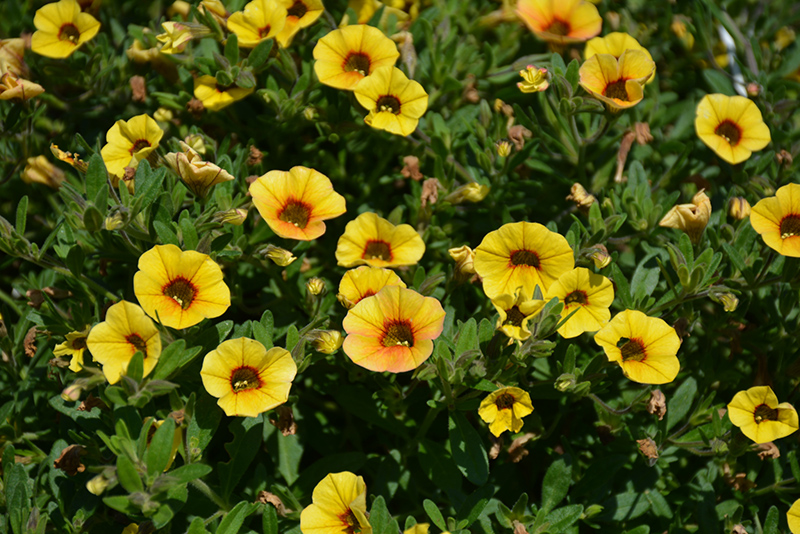Superbells® Saffron Calibrachoa
Description
Beautiful brightly colored, small petunia-like flowers in single or double blooms, solid or patterned, cascade from vigorous mounded-semi trailing plants; heat tolerant and low maintenance, perfect for hanging baskets and patio containers
Landscape Attributes
Superbells® Saffron Calibrachoa is a dense herbaceous annual with a trailing habit of growth, eventually spilling over the edges of hanging baskets and containers. Its medium texture blends into the garden, but can always be balanced by a couple of finer or coarser plants for an effective composition.
Superbells® Saffron Calibrachoa is recommended for the following landscape applications;
Planting & Growing
Superbells® Saffron Calibrachoa will grow to be about 10 inches tall at maturity, with a spread of 24 inches. When grown in masses or used as a bedding plant, individual plants should be spaced approximately 12 inches apart. Its foliage tends to remain low and dense right to the ground. This fast-growing annual will normally live for one full growing season, needing replacement the following year.
This plant does best in full sun to partial shade. It does best in average to evenly moist conditions, but will not tolerate standing water. It is not particular as to soil type or pH. It is highly tolerant of urban pollution and will even thrive in inner city environments. This particular variety is an interspecific hybrid. It can be propagated by cuttings; however, as a cultivated variety, be aware that it may be subject to certain restrictions or prohibitions on propagation.
Superbells® Saffron Calibrachoa is a fine choice for the garden, but it is also a good selection for planting in outdoor containers and hanging baskets. Because of its trailing habit of growth, it is ideally suited for use as a 'spiller' in the 'spiller-thriller-filler' container combination; plant it near the edges where it can spill gracefully over the pot. Note that when growing plants in outdoor containers and baskets, they may require more frequent waterings than they would in the yard or garden.

